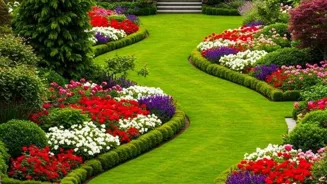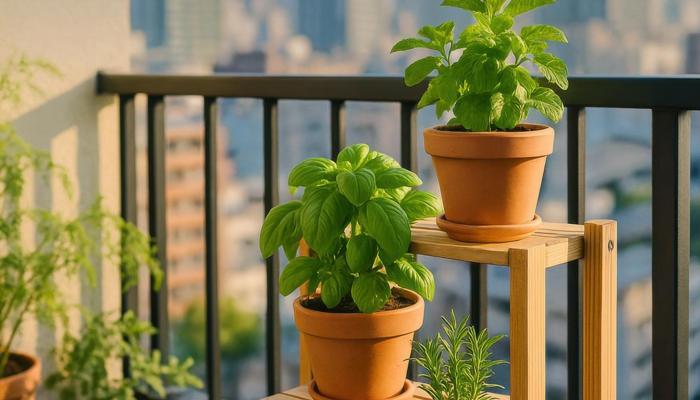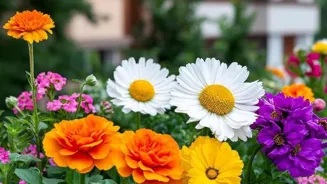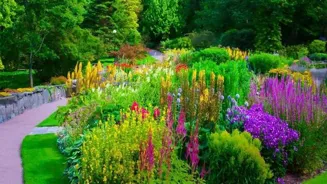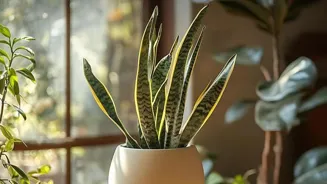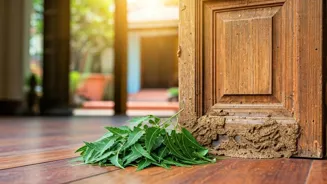Discover the secrets to growing fragrant Indian jasmine in your urban garden! Learn essential tips for a thriving oasis
Essential Tips for Growing Fragrant Indian Jasmine in Your Urban Garden!
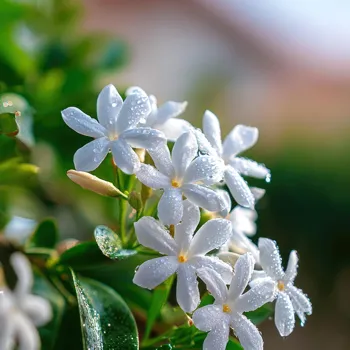
Bring Indian
jasmine's aroma home with easy balcony gardening tips
Bring the enchanting aroma of India into your city home! Growing jasmine, especially the beloved Indian varieties like 'Mogra' and 'Chameli', is totally doable even if you only have a balcony or small terrace.
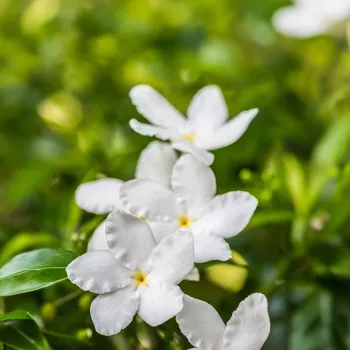
Imagine stepping out into your own little fragrant oasis, the air thick with the sweet scent of jasmine. It's easier than you think! Forget complicated gardening jargon; we're keeping it simple and practical, just like how your grandmom would guide you.
So, put on your gardening gloves, grab your watering can, and let's get started on creating your own jasmine paradise! This guide will share easy-peasy tips to get your jasmine plants thriving and blooming with those gorgeous, intensely fragrant flowers.
First things first
Sunlight is your jasmine's best friend. These flowering beauties need at least 6-8 hours of sunlight daily to truly flourish and produce abundant blossoms.
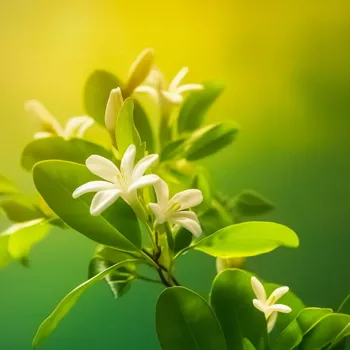
If your balcony or terrace is shaded for a good part of the day, you might want to reconsider the location or supplement with a grow light, especially if you're serious about getting those fragrant blooms.
Direct morning sunlight is usually best, as the afternoon sun can sometimes be a bit too harsh, especially during the peak of summer. Observe how the sun moves across your space during the day and choose the sunniest spot for your jasmine.
Think of it like finding the perfect spot for yourself to sunbathe – jasmine loves that kind of attention! Remember, happy plants give happy flowers! Ensuring adequate sunlight is the most important step in stimulating those much-desired blossoms.
Don't be afraid to move your potted jasmine around to follow the sun's path throughout the year, particularly if you live in a place with changing seasons.
Jasmine thrives in well-draining, organic-rich soil; avoid clay soil to prevent root rot
Next up, let's talk about soil. Jasmine isn't super fussy, but it appreciates well-draining soil that's rich in organic matter. A good potting mix for jasmine should be light and airy, allowing excess water to drain away easily.
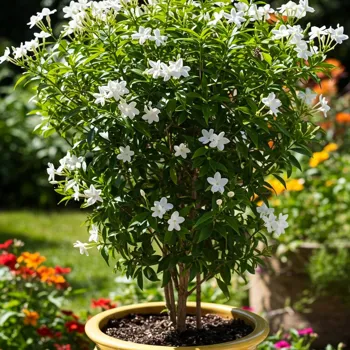
You can create your own mix by combining equal parts garden soil, compost, and sand. Compost is like a superfood for your plants, providing essential nutrients and improving soil structure.
Avoid heavy clay soils, as they tend to retain too much water, which can lead to root rot – a big no-no for jasmine. If you're using a store-bought potting mix, make sure it's specifically formulated for flowering plants.
Adding a handful of bone meal to the soil at planting time can also provide a boost of phosphorus, which is essential for flower development. Think of the soil as your jasmine's home; you want to make it as comfortable and nourishing as possible.
A healthy root system leads to a healthy and vibrant plant, which in turn leads to an abundance of fragrant flowers for you to enjoy. This foundation is key to blooming success.
Water jasmine carefully to avoid root rot
Watering is an art, not just a chore. Jasmine likes to be kept moist, but not soggy. Overwatering is a common mistake that can lead to root rot, so it's important to let the topsoil dry out slightly between waterings. Check the soil moisture by sticking your finger about an inch deep into the soil.
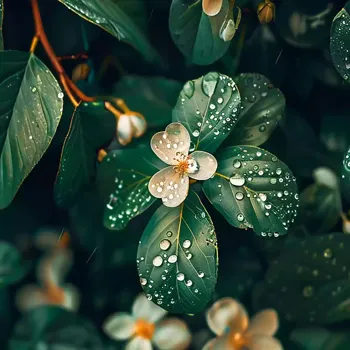
If it feels dry, it's time to water. Water deeply, making sure the water reaches the roots. Avoid watering the foliage, as this can encourage fungal diseases. The best time to water is in the morning, so the foliage has time to dry out before nightfall.
During the hotter months, you may need to water more frequently, while in the cooler months, you can reduce the watering frequency. Observe your plant closely and adjust your watering schedule accordingly. Remember, every plant is different and may have slightly different watering needs.
Paying attention to your jasmine's cues will help you master the art of watering and keep your plant happy and healthy. Consistent watering is vital, but always remember 'moist, not soggy'
Feed jasmine with balanced liquid fertilizer for abundant blooms
Now, let's talk about feeding your jasmine. Like all flowering plants, jasmine needs regular feeding to produce abundant blooms. Use a balanced liquid fertilizer diluted to half strength every two to three weeks during the growing season (spring and summer).
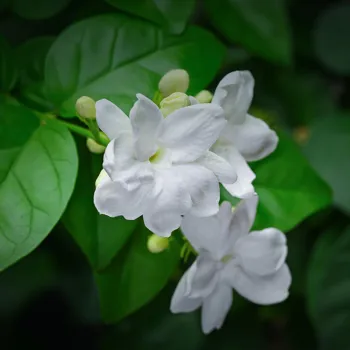
Look for a fertilizer that's specifically formulated for flowering plants, as it will have a higher phosphorus content, which is essential for flower development. Avoid over-fertilizing, as this can lead to leggy growth and fewer flowers.
Alternatively, you can use organic fertilizers like compost tea or fish emulsion. These are gentle and slow-releasing, providing a steady stream of nutrients to your plant. Remember, feeding your jasmine is like giving it a vitamin boost.
It helps the plant stay healthy and strong, which translates to more beautiful and fragrant flowers. Regular feeding will ensure your jasmine has all the nutrients it needs to thrive and produce a stunning display of blossoms. Providing appropriate nutrients is crucial to achieving desired result.
Prune jasmine after flowering to boost growth and blooms
Pruning is essential for keeping your jasmine plant healthy and encouraging more blooms. The best time to prune jasmine is after the flowering season has finished. Remove any dead, diseased, or crossing branches. You can also lightly prune the plant to shape it and encourage bushier growth.
Pruning encourages new growth, which is where the flowers will form. Use clean, sharp pruning shears to avoid spreading diseases. Don't be afraid to prune your jasmine; it may seem counterintuitive, but it actually helps the plant produce more flowers in the long run.
Think of pruning as giving your jasmine a haircut – it helps it look its best and encourages new growth. A well-pruned jasmine plant will be healthier, more compact, and produce more flowers than an unpruned plant. Shaping with pruning will enhance overall health and blooms.
Jasmine plant care tips for pests and diseases
Finally, let's talk about pests and diseases. Jasmine is generally pest and disease resistant, but it can sometimes be affected by aphids, spider mites, or mealybugs. These pests can suck the sap from the plant, weakening it and causing the leaves to turn yellow.
If you notice any pests, you can try spraying the plant with insecticidal soap or neem oil. These are natural and effective treatments that won't harm your plant or the environment. Fungal diseases can also sometimes affect jasmine, especially in humid conditions.
To prevent fungal diseases, make sure to provide good air circulation and avoid overwatering. If you notice any signs of disease, such as black spots on the leaves, remove the affected leaves immediately and spray the plant with a fungicide.
Regular inspection and early treatment are key to keeping your jasmine healthy and pest-free. A little vigilance can go a long way in preventing serious problems.
AI Generated Content. Glance/InMobi shall have no liability for the content
